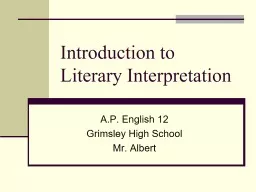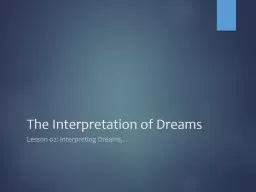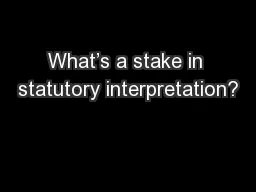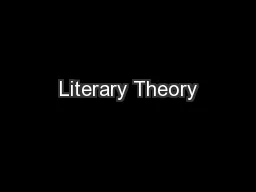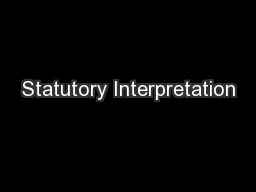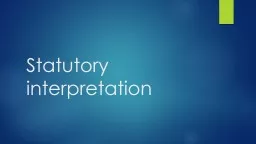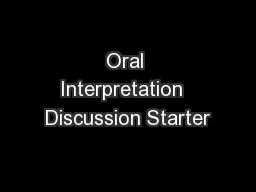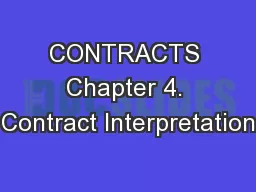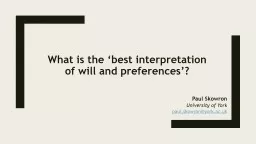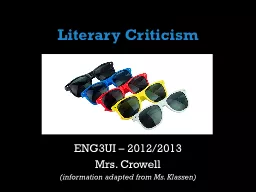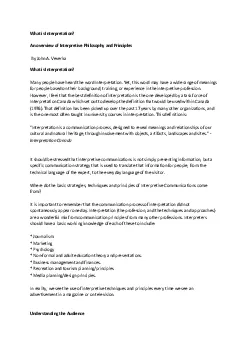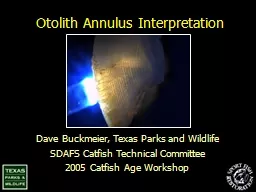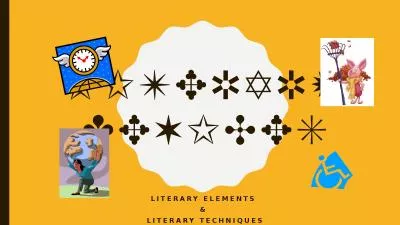PPT-Introduction to Literary Interpretation
Author : aaron | Published Date : 2019-11-25
Introduction to Literary Interpretation AP English 12 Grimsley High School Mr Albert The Literary Method Inductive Reasoning Inductive Reasoning involves going
Presentation Embed Code
Download Presentation
Download Presentation The PPT/PDF document "Introduction to Literary Interpretation" is the property of its rightful owner. Permission is granted to download and print the materials on this website for personal, non-commercial use only, and to display it on your personal computer provided you do not modify the materials and that you retain all copyright notices contained in the materials. By downloading content from our website, you accept the terms of this agreement.
Introduction to Literary Interpretation: Transcript
Introduction to Literary Interpretation AP English 12 Grimsley High School Mr Albert The Literary Method Inductive Reasoning Inductive Reasoning involves going from a series of specific casesdetails to a generalized thesis statement The conclusion in an inductive argument is never guaranteed but is DEBATABLE ie A GOOD THESIS STATEMENT. Anthony Casey and Rob Plummer. Who interprets the Bible? The Magisterial? The Church? Who is “The Church. ?” . What is the role of the Global Church?. Why is Biblical Interpretation Important?. Lesson 02: Interpreting Dreams…. Starter: . What was meant by the following terms…. Manifest and latent content. Dreamwork. Condensation. Displacement. Secondary Elaboration?. The interpretation of dreams. Limits of judicial power. Parliamentary supremacy. Democratic governance. Rule of Law. Statutory Interpretation. Three sources of statutory interpretation law:. Common law principles. Interpretation Acts. Dr. Maier. Aristotle: . Poetics. First significant work of literary criticism . Authored in 335 B.C. . Pity and Fear (Eleos and Phobos) . Catharsis. Mimesis. A Multiplicity of Approaches. Literary critics are almost never unified in their interpretation of a novel or any literary work. Why do you suppose this is the case? What factors make it virtually impossible for critics to come to a consensus regarding the meaning of a literary work? . When judges decide on the meaning and application of the words or terms in an Act to resolve a dispute before the court. Statutory Interpretation . This involves judges interpreting ________________________. Jocelyn Wiley (American Community School of Abu Dhabi). Title Goes Here. This is the standard page design. . This content area is to be used for bullet points.. This is the standard page design. . This content area is to be used for bullet points, images, and general content.. Statutory. . interpretation. Approaches to judicial interpretation. Many cases heard by the highest courts involve the meanings of words in a statute or delegated legislation. . There . is a major debate as to whether judges should interpret legislation so as to give effect to the intention or purpose of that legislation (. “Above all, the art of reading aloud should be cultivated”. -Alfred Lord . Witehead. . How can careful reading help you better understand literature in a way where you can interpret it using your voice? . Ch.4.D. Interpretation. 1. Contract Interpretation. Interpretation Aids:. Dictionary definition . Inferences from other terms in the contract. Trade custom/usage . Inferences from market conditions/surrounding circumstances. Paul Skowron. University of York. paul.skowron@york.ac.uk. . Overview.. Talking about the word ‘best’.. ‘Steel manning’ . General Comment No.1.. Scope of the best interpretation principle.. The epistemic reading of best interpretation and some problems.. Mrs. Crowell. (information adapted from Ms. . Klassen. ). Literary Criticism: An Introduction. A DEFINITION:. Literary Criticism is the . study, analysis . and interpretation of a literary work. . The . An overview of Interpretive Philosophy and PrinciplesBy John A VeverkaWhat is InterpretationMany people have heard the word Interpretation Yet this word may have a wide range of meanings for people ba Dave Buckmeier, Texas Parks and Wildlife. SDAFS . Catfish Technical Committee. 2005 Catfish Age Workshop. Considerations. Time of annulus . formation. YC versus age assignment . Time of collection. Limit . & . Literary Techniques. Literary devices. There are two types of literary devices: . literary elements . and . literary techniques. .. Literary elements . are found in . every. well-written piece and are essential to the creation of the literary work..
Download Document
Here is the link to download the presentation.
"Introduction to Literary Interpretation"The content belongs to its owner. You may download and print it for personal use, without modification, and keep all copyright notices. By downloading, you agree to these terms.
Related Documents

